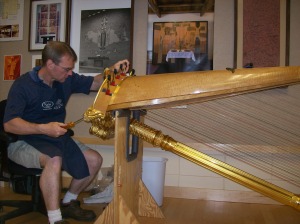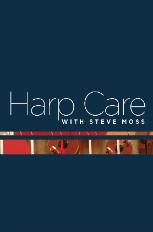
People call me all the time to ask me “what’s a harp regulation? My teacher told me my harp needs one but I have no idea what she’s talking about.”
Harp regulation is a periodic maintenance service designed to keep your harp in optimal playing condition. In a nutshell, harp regulation includes:
Let’s look at each of these points in a little more detail. A pedal harp regulation always includes replacing the pedal felts, even if they don’t look ripped or worn out. Pedal felts compress over time. In addition to making your pedal action louder, this actually throws pedal rods and the playing mechanism out of adjustment. Your technician will replace the felts before doing any adjustments, to bring the harp closer to its original specifications.After the felts are replaced, the pedal rods may need a slight adjustment to compensate for the normal “bellying,” or slight pulling up of the soundboard that occurs over time.
The next step in a harp regulation is locating and eliminating unwanted noise. Your technician will move the pedals or levers to different positions and play each string, listening for noises that weren’t eliminated by the felt and pedal rod adjustments described above. While it’s not always possible to eliminate every unwanted noise a harp makes, many annoying sounds can be eliminated.
Finally, the technician will check and optimize the harp’s intonation. He or she will play each string in each pedal or lever position, compare the pitches on an electronic tuner, and make adjustments to insure that the half-step increments between each position are as perfect as possible.
How often does a harp need regulation? That depends on how much you play, how hard you play, and how high your standards are. Most busy professional pedal harpists have their harps regulated once a year. Part time or casual players and new students can usually wait two to three years or more. Lever harps require less maintenance. I generally recommend having a lever harp serviced once every five years or so, as long as the player isn’t experiencing any problems.


Appreciation to my father who informed me concerning this webpage,
this weblog is in fact amazing.